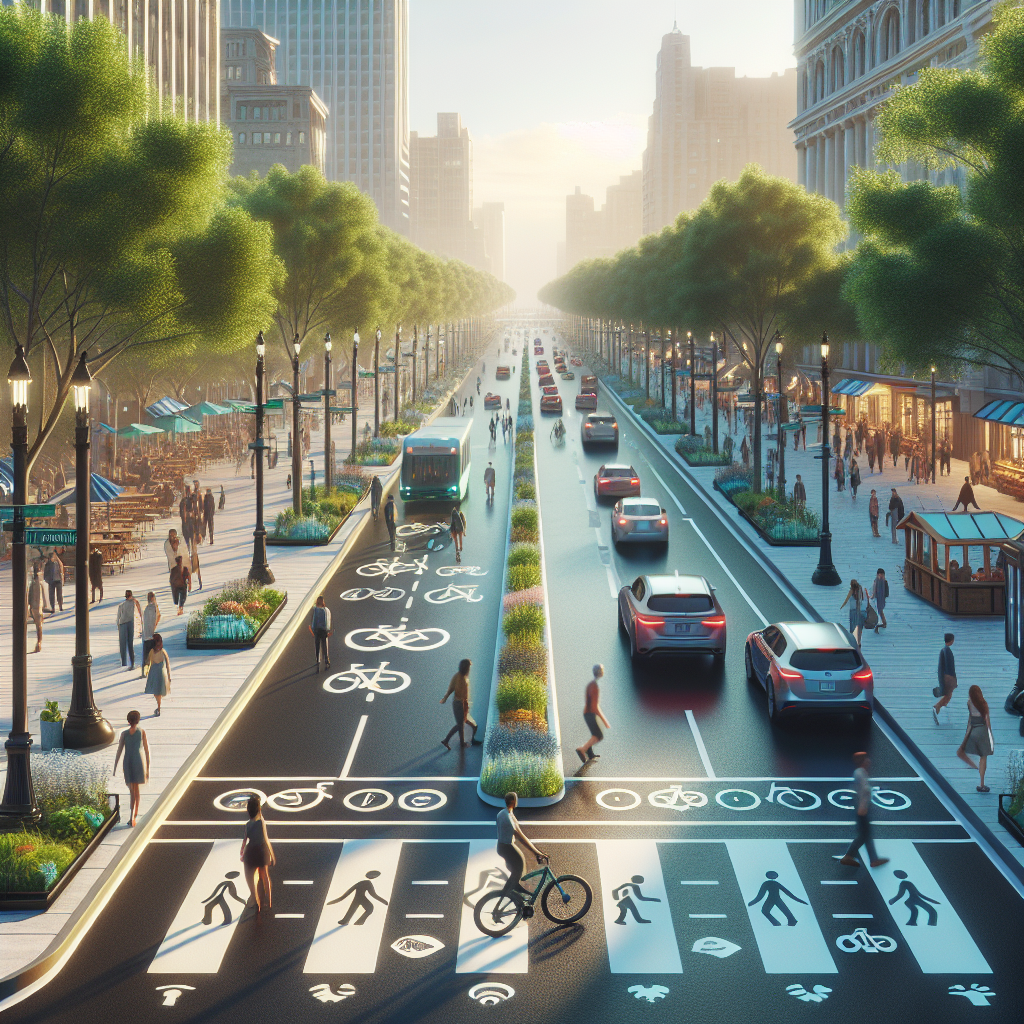Urban Planning for Walkability: Reducing the Need for Cars
In an era where urban centers are increasingly choked by vehicular traffic, noise, and pollution, the concept of walkability within urban planning has emerged as a vital component in creating more livable, healthy, and sustainable cities. Walkability is a measure of how friendly an area is to walking. It encompasses more than just the presence of sidewalks and includes the safety, comfort, and convenience of walking in a particular area. As cities strive to reduce their reliance on cars, urban planning for walkability has gained momentum, promising a plethora of benefits ranging from environmental to economic and health advantages.
The Importance of Walkability
Walkability is not merely about the ability to walk somewhere; it’s about creating spaces where walking is enjoyable, safe, and efficient. A walkable city prioritizes pedestrians over vehicles, thereby enhancing the quality of urban life. This shift can lead to reduced traffic congestion, lower emissions, and significant health benefits due to increased physical activity. Furthermore, walkable neighborhoods tend to foster stronger communities as people are more likely to interact with their surroundings and each other.
Strategies for Enhancing Walkability
Urban planning plays a crucial role in enhancing walkability through various strategies, including:
1. Mixed-Use Development: Integrating residential, commercial, and recreational spaces within close proximity to reduce the need for long commutes and encourage walking as a primary mode of transportation.
2. Comprehensive Pedestrian Infrastructure: Developing sidewalks, pedestrian zones, and crosswalks that are safe, well-maintained, and accessible to everyone, including people with disabilities.
3. Traffic Calming Measures: Implementing speed bumps, narrower roads, and pedestrian-first traffic signals to slow down vehicular traffic, making streets safer for pedestrians.
4. Green Spaces and Public Places: Creating parks, playgrounds, and public squares where people can relax, play, and socialize, encouraging them to walk to these destinations.
5. Transit-Oriented Development (TOD): Designing neighborhoods around public transit options to facilitate easy access to wider city areas without the need for a car.
Challenges to Walkability
While the benefits are clear, there are challenges to achieving walkability in urban areas:
– Existing Infrastructure: Many cities have been designed with cars in mind, making it difficult to retrofit them for pedestrians.
– Economic Factors: The initial investment required for pedestrian infrastructure and mixed-use development can be significant.
– Cultural Shift: Encouraging people to walk rather than drive requires a change in mindset and lifestyle, which can take time.
Despite these challenges, the trend towards more walkable urban areas is growing, driven by the demand for healthier, more sustainable, and more enjoyable modes of living.
Case Studies of Walkable Cities
Cities around the world have taken steps towards enhancing walkability with notable success:
– Copenhagen, Denmark: Known for its extensive network of pedestrian streets and bike lanes, Copenhagen’s urban planning prioritizes people over cars.
– Melbourne, Australia: Through its ’20-Minute City’ strategy, Melbourne aims to create a city where every resident can meet most of their needs within a 20-minute walk from home.
– Vancouver, Canada: Vancouver’s commitment to high-density living, combined with abundant green spaces and a comprehensive public transit system, sets a benchmark for walkable urban living.
FAQs
Q: Why is walkability important in urban planning?
A: Walkability enhances the quality of urban life by reducing traffic congestion, improving air quality, encouraging physical activity, and fostering stronger communities.
Q: How can cities become more walkable?
A: Cities can become more walkable by investing in pedestrian infrastructure, implementing mixed-use development, creating green spaces, and adopting traffic calming measures.
Q: Can walkability reduce the need for cars?
A: Yes, by making it easier and more enjoyable for people to walk for their daily needs, walkability can significantly reduce the reliance on cars.
Q: Is it expensive to make a city walkable?
A: While there are upfront costs involved in developing pedestrian infrastructure and mixed-use areas, the long-term economic, health, and environmental benefits often outweigh these costs.
Q: How does walkability impact community life?
A: Walkable neighborhoods tend to foster stronger community ties as people are more likely to interact with their surroundings and each other, enhancing social cohesion.
In conclusion, urban planning for walkability is not just about creating spaces where people can walk; it’s about reimagining cities as vibrant, healthy, and sustainable places where walking is a pleasure. As urban areas continue to grow, the importance of walkability will only increase, offering a pathway to a more livable future. By addressing the challenges and embracing the strategies outlined above, cities can reduce their reliance on cars and move towards a more walkable, and thereby more livable, urban environment.

